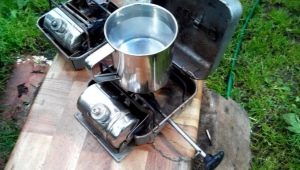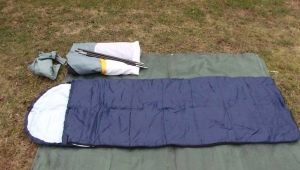How to choose the right sleeping bag?
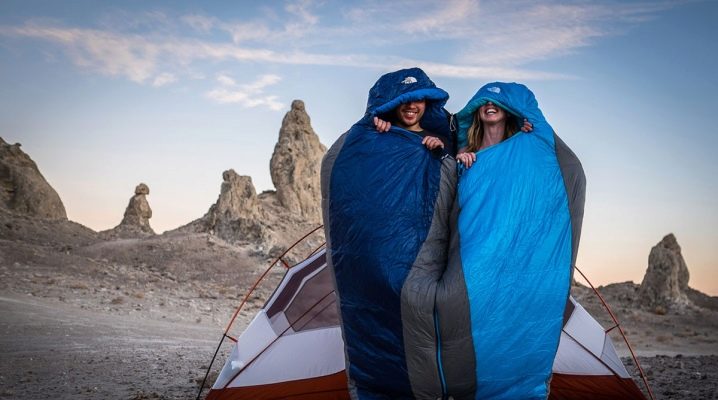
Many of us have become especially zealous fans of tourism in recent years. There is nothing surprising in this: to breathe fresh air, enjoy the silence and take a break from the bustling and noisy city. And it often happens that trips are not limited to one day, which means that the issue of spending the night somewhere in nature becomes of serious importance. To make your travel experience really great, you need a quality sleeping bag.
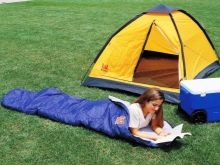
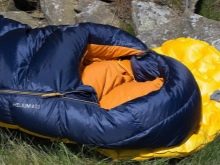
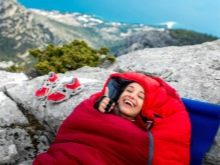
What is it and why is it needed?
A sleeping bag allows you to keep warm during sleep and provides excellent rest and recuperation during the night, that is, it is necessary to sleep there. In addition, its presence will allow you not to be afraid of the bites of various insects, which can significantly spoil your sleep.
How to choose the right sleeping bag you should first clearly understand what aspects are important for a particular tourist and in what conditions he is going to use this thing. It will be important at what time of the year a person goes on a trip, for how long, what weather will be waiting for him, whether it will be a hike on foot, on water or climbing of a climbing type.
In general, the selection of a quality sleeping bag for a hike is a compromise between weight, compactness when folded, cost, and thermal insulation characteristics.

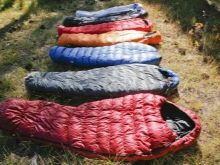
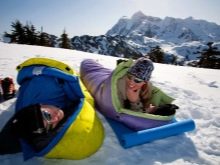
Construction types
If we talk about the designs of the product in question, then it is divided into several types:
- blanket;
- cocoon;
- quilt;
- elephant leg;
- group bag.
A sleeping bag is a bag that has a rectangular shape. If you unzip the zipper that goes all over the product from top to bottom, you get a real blanket. Can be completed with a hood-headrest. A number of models can be easily connected to each other. Typically, solutions of this type are chosen for camping and hiking, because in these cases the weight of the equipment is not so important.
Due to its design, this option is quite comfortable for sleeping. Yes, and large people will like such products most of all.


The cocoon variant has an anatomical type shape resembling the human body. It has a hood, as well as a large collar, which increases thermal insulation. Due to the specific cut, the mass of the sleeping bag will be less than that of the same blanket. And the maximum fit to the human body allows you to better retain heat.
This type of sleeping bag can also be zipped. Moreover, you can use models from different manufacturers for this. But here you need to understand that the lightning of such solutions usually does not reach the end of the sleeping bag, which is why the resulting design will most likely have a forked tail.
To make it convenient to connect such models, manufacturers produce special rulers with a zipper on the left or right side. So, if you plan to combine them, it is better to buy the same models, but with zippers on different sides.
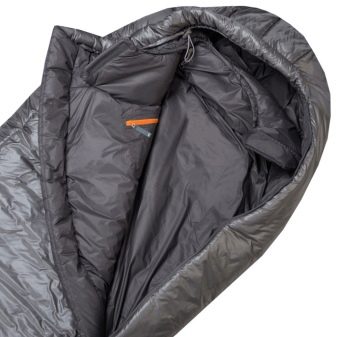

The third category - quilts. They are much more common in the United States, where there are indeed many adherents of such sleeping bags. The classic version of this solution is a bag in which there is no zipper and there is practically no back. It is usually used together with a rug, moreover, inflatable, and better - inflating on its own. Together with him, he makes up a holistic design. The connection of these elements is achieved by elastic straps.
The essence of the idea is that when we lie on the mat, the material for the back is practically not used, which is why it is absent in the quilt. This greatly facilitates the weight of the bag and allows you to simplify the design by removing the zipper from there.
Therefore, a quilt is often also significantly cheaper than a simple sleeping bag. The main disadvantages of such a product are:
- poor ventilation in difficult weather conditions;
- heat loss where adhesion to the mat is carried out;
- Difficulty getting in and out of the sleeping bag.
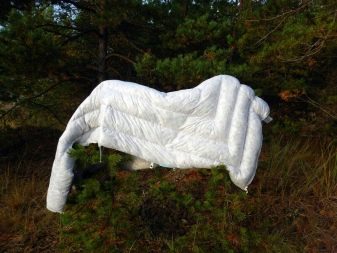

Another version of the sleeping bag has a name elephant leg. This is a shortened version. It is not very common, although it was previously used by many conquerors of the mountains. The main principle is to save weight due to the presence of a large amount of hiking equipment.
This solution is best suited for climbers, for whom every gram is important: all participants in the campaign, under such weather conditions, put on a down jacket during the day, at night, without taking it off, they put a sleeping bag on their feet. Thus, it is possible to reduce weight and save some space in the backpack.

The last type of sleeping bags that I want to talk about - multi-seat or group. Note that they are not mass-produced, but are usually sewn to order.They are very limitedly used by speleologists for some particularly difficult hikes in winter.
Such products make it possible to seriously save the weight of the group's equipment, but in normal use they are extremely impractical.
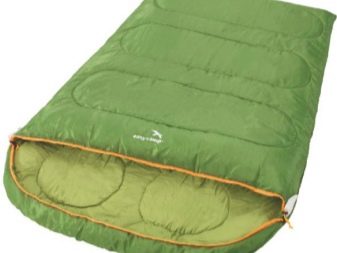
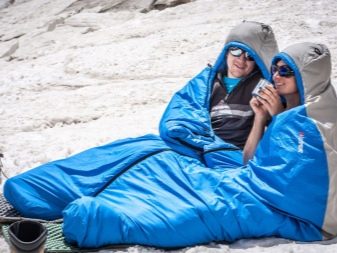
Dimensions
There are five categories of sizes in which sleeping bags are sewn:
- children's;
- teenage;
- ordinary;
- big;
- double.
Children's size - the most compact. Its parameters are 71 by 145 centimeters. Usually such solutions are made from fabrics of bright colors.
The teenage version usually has parameters - 73 by 167 centimeters. In addition to teenagers, adults who are short in stature can also use sleeping bags of this size.
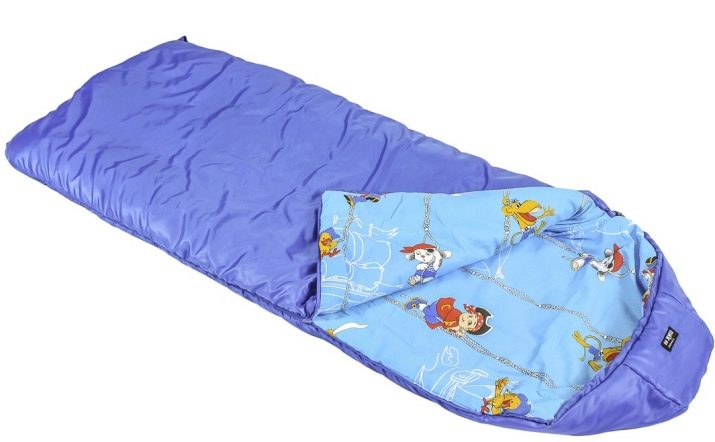
Solutions that are standard have dimensions of 84 by 190 centimeters. They are usually meant for people of average height.
If we talk about sleeping bags of large sizes, then these are solutions with parameters of 84 by 198 centimeters or 96 by 205 centimeters. Sleeping bags of this type will be comfortable for tall or overweight people.
And if we talk about double options, then they are made from a pair of bags with a zipper on the clasp, as mentioned above.
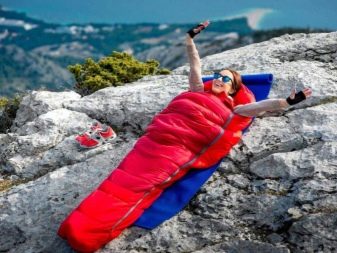

Base materials
It should be said that the sleeping bag must be warm so that a person warms up when it is cold and does not get sick. It should weigh a little, take up little space in the bag and last longer. All this will directly depend on what it is made of. It's about the base material. There are 2 main options:
- synthetics;
- fluff
In the first case, various materials are used, and many manufacturers make just such bags. Most of them position their products as an excellent analogue of fluff.In the case of synthetics, it should be understood that thin fibers provide excellent thermal insulation, and thick fibers provide volume restoration. A large number of hollow spaces in the fibers reduces the weight of sleeping bags and improves protection. Good elasticity allows you to maintain volume. And if the fibers are also siliconized, then this provides moisture repellency.
The main advantages of such solutions are:
- ease of use in high humidity;
- ease of repair and ease of maintenance;
- fairly low cost.
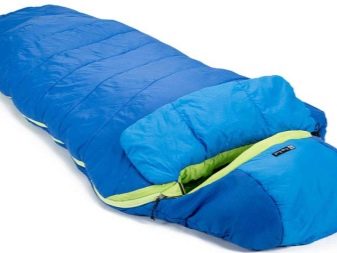
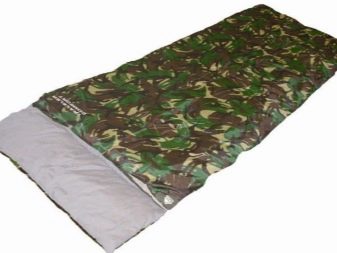
The basis of the product can be fluff. And few materials can compare with it, if we are talking about a good down bag, because it has excellent squeezing in the folded position and thermal conductivity. Waterfowl down is still considered a good filler for any bag today, although it has its drawbacks. Goose down is considered the best, and after it - duck down.
In the case of down, the important characteristics will be the weight, temperature range of use and the volume that an ounce of down can take up. The higher the last characteristic, the better the down will be.
In addition, down has excellent compressibility characteristics. When folded, such a bag takes up almost 2 times less space than the same option, but with a different insulation. But this material has 2 drawbacks:
- price;
- low resistance to water.
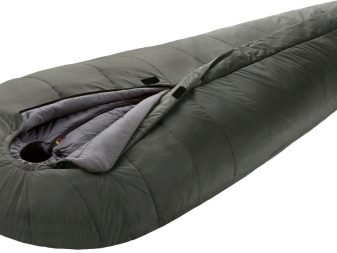
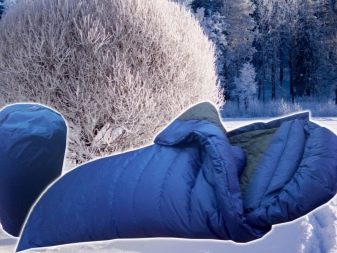
If we talk about the price, then a good, high-quality down sleeping bag will cost more than one hundred dollars, and if it’s about moisture, then when wet, the fluff gets stuck into sticky lumps, as a result of which its further use is no longer possible. But recently, down has been subjected to a special waterproof treatment, which significantly increased its characteristics.In addition, it is also protected with a bivouac bag.
Most of the products on the market are 100% synthetic. One of the best synthetic materials is called Pertex Quantum, Taffeta is also good, which is used for the inside of the product. It has excellent hypoallergenic properties, is hygroscopic, light and strong.
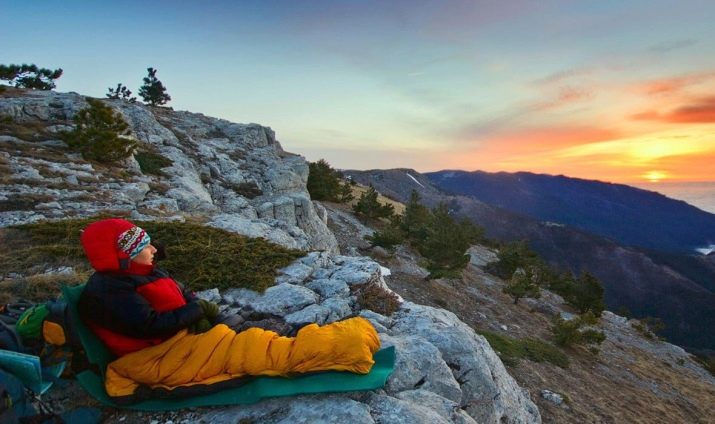
seasonality
When talking about seasonality in the issue of using a sleeping bag, they mean the seasons of the European climate: winter, summer and the time between seasons. If the information for the model says that it is “three-season”, then this means “spring, autumn, summer”. But beginners in such definitions are confused. Seasons in these times of climate change are a very arbitrary thing.
Even in the middle latitudes, there are places where temperature fluctuations are very large, which means that a winter sleeping bag will definitely be needed when it seems to be not very cold yet. And if we talk about the mountains, then there you can generally forget about the usual classification, because even at a low altitude the temperature can drop significantly below zero.
Therefore, seasonality is a rather relative characteristic.
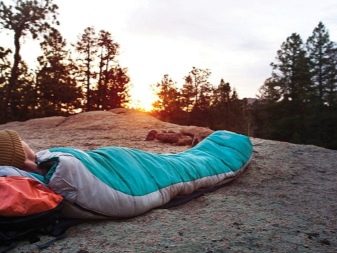
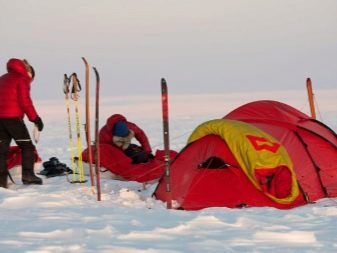
Selection Guide
To choose a quality model, you should pay attention to important factors.
- Travel type. Perhaps a person needs a solution for fishing, maybe for climbing a mountain or just hiking. In all these cases, it will be better to use different models of sleeping bags: somewhere you will need the lightest, and somewhere - the most equipped.
- Climatic conditions. When exactly the trip will be carried out is an important point. It will not be superfluous to pay close attention to the difference between the comfort temperature and its limit. Quickly freezing people are better off relying on the first parameter when choosing.And people with experience and climbers can choose a sleeping bag, focusing only on the temperature limit.
- Growth. A number of manufacturers offer 2 types of sizes: for people with a height of up to 180 centimeters and up to 198 centimeters. It would be right to choose a solution with a small margin. If a model is bought for trips in the summer, then 15–20 centimeters should be added to the figure of human growth, and 30 centimeters in other seasons. When buying a sleeping bag, it will not be superfluous to try it on to be sure that it will be comfortable in it.
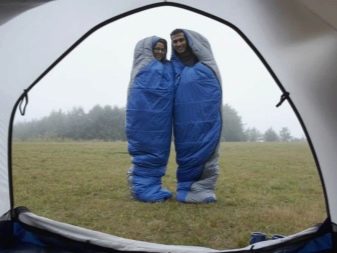
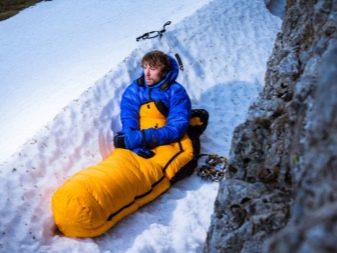
In addition, you should inspect the product you like and pay attention to the presence of such elements:
- anatomical hood;
- pillow pocket;
- loops for drying and hanging;
- good, large and conveniently fastened zipper.
Even in a quality bag, the filler should be well distributed, and there should be no seams that are quilted through.
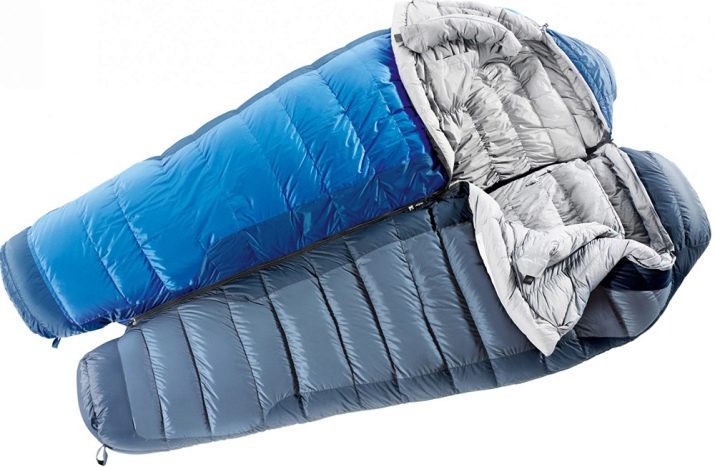
Popular Models
Of course, everyone will have their own best sleeping bags, but we will do a little review of a few that different people consider to be the best solutions.
In almost all ratings in the top (in the first places) are sleeping bags from the manufacturer Alexika. As an example, the model Siberia Wide Plus. This option is soft, practical and comfortable. The inner material is something like a plaid. According to user reviews - very roomy. Also, buyers note high-quality lightning, which does not bite and has a smooth ride. It is also easy to roll up and wash. It weighs just under 3 kilograms.

Another great sleeping bag Marmot CWM MemBrain Long. According to users, with such a model you can go almost into outer space. And this is so, given its characteristics:
- filler - high-quality goose down;
- there is a breathable waterproof material;
- there is a special design to prevent heat loss;
- equipped with a fitted hood;
- there is a special roller to protect the face;
- the lightning is protected from biting.
Users note that in this sleeping bag you can sleep comfortably even in 40-degree frost.

Another model that deserves attention is Montana Regular. This sleeping bag is considered the warmest in the Rock Empire manufacturer's line. It is equipped with a three-layer filler, which provides excellent heat saving. There is a special anatomical hood, collar and insulated zipper, as well as additional pockets where you can put some small things.
This sleeping bag belongs to the type of cocoons. The lightning is located on the right or at the left that allows to fasten it with other sleeping bag. It can comfortably sleep at temperatures up to -40 degrees. It is over 2 meters long. Its weight is just over 2 and a half kilograms.
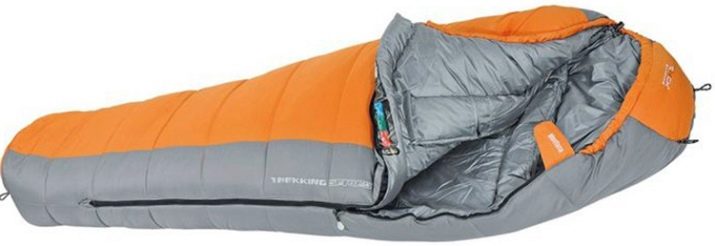
Another model is "Yamal" XL V2 from the manufacturer Nova Tour. It belongs to the category of cocoons, it is comfortable in it up to a temperature of -30 degrees. Qualitatively retains heat in this model a special filler called Hollow fiber, consisting of 2 layers. It is complemented by a high-quality zipper, a drawstring hood and a cool neck collar. This option will be an excellent solution for people with large growth. Such a bag can be combined with another model thanks to the 2-lock type zipper.
This solution also comes with a compression bag. The mass of this model is a little less than 2.5 kilograms.

Treck 450L from KingCamp can be used all year round. In winter, you can use up to 20-degree frost.It has a 2-layer padding called WarmLoft, a two-way zipper for connecting to another sleeping bag, as well as a collar and a hood.

How to choose a sleeping bag, see the following video.






















